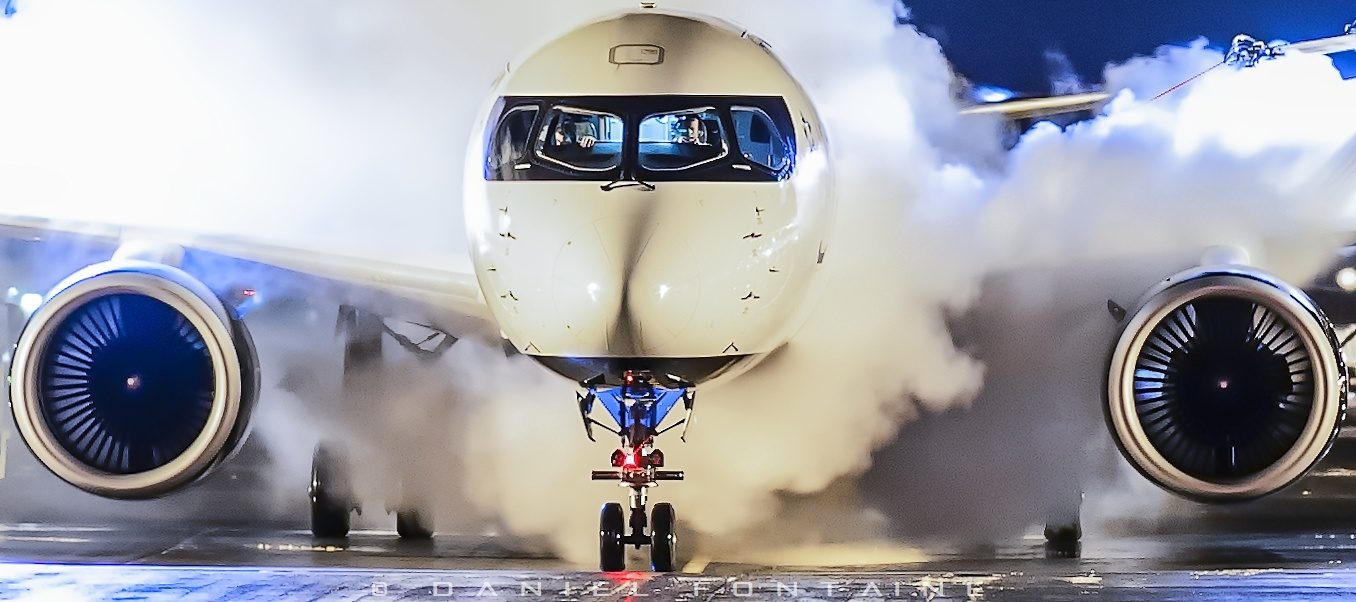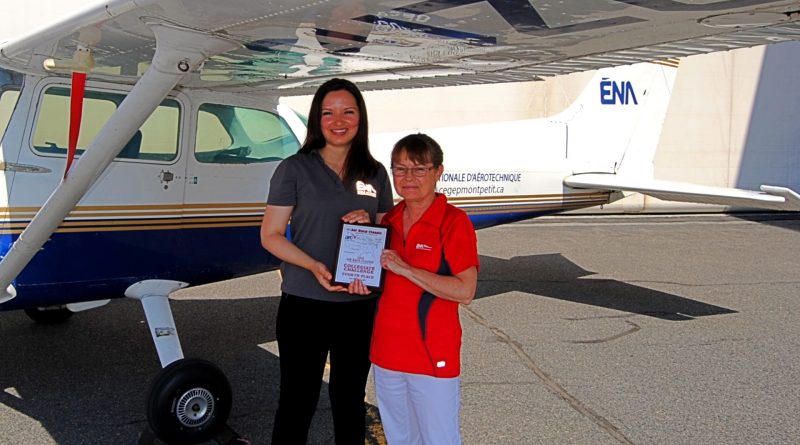Two Quebeckers at the Air Race Classic
The Air Race Classic is one of the oldest air navigation competitions for women only. Its origins date back to 1929; the aviator Amelia Earhart has already participated.
The competition has several stages of navigation and the total distance is 2,400 nautical miles on average. There is no age limit to participate, but a team of at least two female pilots is required, one of which will have a minimum of 100 flying hours as a pilot in command and the second must have at least 500 hours flying as pilot in command; a third teammate may join the group provided that she holds at least a student pilot’s license. The competition has two categories; 1 academic and 2 general open to all.
The team of the from l’École Nationale d’Aérotechnique (ÉNA) was represented by the student Madeleine Mena Zapata who holds a professional pilot’s license and nearly 500 hours of flight and by Professor Michèle Rivest who has more than 3,000 hours of flight, 2,000 of them as a bush helicopter pilot. The team was called Les Demois’Ailes and competed in the general category, finishing fourth in its class and twelfth overall.
The two aviators made very laudatory remarks about the high quality of the organization of the race which run great. But even the best organization in the world, cannot control the weather, which this year is among the worst in the history of the competition. Michèle Rivest is a pilot who has seen others, but as she told us; “When the sky is blocked, there is nothing to do.” Madeleine Mena Zapata had never been faced with such weather conditions. Six of the nine stages of the race had to be canceled and 18 participants were forced to take a commercial flight to get to the closing ceremony.
All trips were in controlled areas, the FAA and its controllers were well aware of the presence of the teams and followed them closely. The controllers did not hesitate to inquire about the situation of each team. All the aircraft that participated in the race were equipped with two electronic plotters that allowed the organizers to know their position and their movement in real time.
The navigation is done using the software Foreflight on iPad and the pilots receive the weather in real time. On the other hand, the heat inside the aircraft poses a problem for the use of electronic equipment. All those who have flown on Cessna-made aircraft know very well how quickly the temperature can rise in the narrow cabin. Moreover, since it was a race, the ventilation holes had been plugged with duct tape in order to reduce the drag and it was obviously out of the question to open the windows, the “Cessan 172” could then be easily be transformed in a “Sauna 172 Fahrenheit” under the hot sun of the southern United States. The team resorted to sunscreens set with again some duct tape and used an ice pack to put under the iPad. It is forbidden for teams to make permanent modifications to the aircraft, but all that is temporary is allowed hence the use of the duct tape.
Teams are evaluated according to the time they take make a leg; As several different aircraft models are used for the race, several months before the competition a flight is made with the presence on board of an authorized examiner who checks the indicated speed (IAS) and the calibrated speed (CAS) of the device to establish his dhandicap.
The teams must therefore establish the best navigation strategy to cross the distance as quickly as possible. Ms. Rivest’s bush pilot experience encouraged her to always choose the lowest legal altitude, whereas for Ms. Zapata it was quite the opposite. The two teammates had to compromise and flew at intermediate altitudes most of the time.
The initial budget included $ 8,500 for departure from Saint-Hubert in Cessna 172, participation in the race and return. It’s finally slightly less than $ 8,500 that the adventure will have cost. Several sponsors as well as fundraising activities have found the necessary amount. The Air Race Classic is a high level competition that is not for beginners and both pilotd have found the experience rewarding. Ms. Zapata made many friends, while for Ms. Rivest it was a return to flying after several years of teaching at l’ÉNA.
>>> Follow us on Facebook and Twitter

